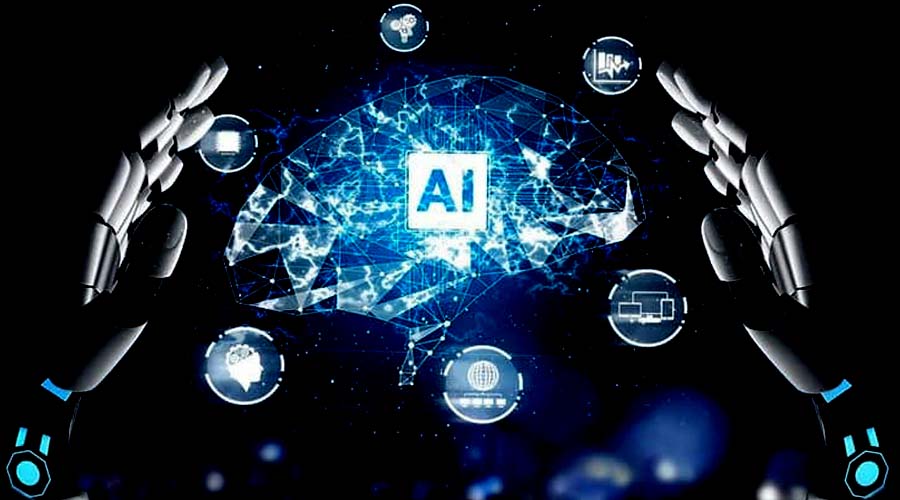AI Unleashed: Exploring the Barriers of Synthetic Intelligence

Creation

Synthetic Intelligence (AI) has emerged as a transformative pressure in quite a lot of domain names, sparking each awe and apprehension. Its functions proceed to make bigger, blurring the traces between human cognition and device intelligence. On this essay, we embark on an exploration of the limits of AI, delving into its present functions, boundaries, and long run possibilities.

Present Functions of AI
Fresh AI methods showcase exceptional feats that rival human functions, together with:
- Herbal Language Processing (NLP): AI can comprehend and generate human language, enabling seamless verbal exchange with customers.
- Laptop Imaginative and prescient: AI can “see” and interpret pictures and movies, facilitating object reputation and scene working out.
- System Studying (ML): AI algorithms can be informed from information with out specific programming, enabling them to conform and enhance steadily.
- Skilled Programs: AI methods can simulate human experience in particular domain names, offering treasured insights and resolution make stronger.
- Automatic Reasoning: AI can draw logical inferences and clear up advanced issues, mimicking human cognitive skills.
Boundaries of AI
Regardless of its spectacular functions, AI additionally faces boundaries:
- Slim Focal point: Present AI methods are in most cases designed for particular duties and shortage the overall intelligence of people.
- Knowledge Dependency: AI algorithms depend closely on high quality information for coaching and inference, restricting their efficiency in novel or biased datasets.
- Interpretability: AI fashions may also be advanced and opaque, making it difficult to know the way they come at their choices.
- Moral Considerations: AI raises moral questions on privateness, bias, and activity displacement, necessitating accountable building and deployment.
Long run Possibilities of AI
The way forward for AI holds each alternatives and demanding situations:
- Enhanced Functions: AI is poised to advance considerably, with enhancements in herbal language working out, decision-making, and problem-solving.
- Broadening Programs: AI will to find wider programs in healthcare, finance, transportation, and different sectors, remodeling industries and societies.
- Human Collaboration: AI will an increasing number of supplement human functions, empowering people and organizations to succeed in extra.
- Law and Governance: Governments and world organizations are growing frameworks to verify moral and accountable building and deployment of AI.
- Analysis Frontiers: Basic analysis in AI principle, algorithms, and {hardware} guarantees to push the limits of AI functions even additional.
Conclusion
AI is an evolving box with immense possible to form our long run. Whilst present functions are spectacular, the limits of AI proceed to make bigger, promising transformative developments. On the other hand, it’s important to handle the constraints and moral issues related to AI to verify its accountable and really helpful use. As we navigate the uncharted territories of AI, collaboration, legislation, and ongoing analysis will play important roles in shaping the way forward for this transformative generation.## Ai Unleashed: Exploring The Barriers Of Synthetic Intelligence
Govt Abstract
Synthetic intelligence (AI) is impulsively remodeling the arena as we are aware of it, with developments in device finding out, herbal language processing, and laptop imaginative and prescient riding innovation throughout industries. This newsletter explores the limits of AI, analyzing its functions, programs, and moral implications.
Creation
Lately, AI has made important strides, pushing the limits of what machines can understand, perceive, and attain. From self-driving vehicles to clinical analysis equipment, AI is redefining human functions and reshaping the way forward for our society. This newsletter targets to make clear the multifaceted nature of AI, exploring its possible and demanding situations.
FAQs
- What’s AI?
- AI refers back to the skill of machines to accomplish duties that in most cases require human intelligence, comparable to finding out, problem-solving, and decision-making.
- How does AI paintings?
- AI methods are educated on huge quantities of information, letting them establish patterns, make predictions, and draw inferences.
- What are the advantages of AI?
- AI provides a lot of advantages, together with automation, stepped forward decision-making, enhanced buyer reviews, and clinical breakthroughs.
Most sensible 5 Subtopics
1. System Studying
- Description: System finding out is one of those AI that permits computer systems to be told from information with out specific programming.
- Essential Items:
- Supervised Studying: Coaching fashions on categorized information to make predictions.
- Unsupervised Studying: Figuring out patterns and buildings in unlabeled information.
- Reinforcement Studying: Studying via trial and blunder, receiving rewards for desired results.
2. Herbal Language Processing
- Description: NLP comes to the interplay between computer systems and human language, enabling machines to grasp, interpret, and generate textual content.
- Essential Items:
- System Translation: Translating textual content from one language to any other.
- Sentiment Research: Figuring out the emotional tone of textual content.
- Textual content Summarization: Condensing huge textual content into concise summaries.
3. Laptop Imaginative and prescient
- Description: Laptop imaginative and prescient lets in machines to “see” and interpret pictures and movies.
- Essential Items:
- Symbol Classification: Figuring out items and scenes in pictures.
- Object Detection: Finding and figuring out particular items inside of pictures.
- Facial Popularity: Figuring out people in line with facial options.
4. Robotics
- Description: Robotics combines AI with bodily {hardware}, enabling machines to accomplish advanced duties in the true global.
- Essential Items:
- Self sufficient Navigation: Permitting robots to navigate environments with out human intervention.
- Manipulation and Greedy: Enabling robots to deal with and manipulate items.
- Human-Robotic Interplay: Designing robots that may engage naturally with people.
5. Moral Implications
- Description: Moral issues surrounding AI are the most important, together with privateness considerations, activity displacement, and the potential of bias.
- Essential Items:
- Bias in AI: Making sure that AI methods are educated on consultant information to keep away from biased results.
- Process Automation: Balancing AI’s possible for activity displacement with alternatives for activity introduction.
- Privateness and Knowledge Coverage: Protective person privateness and making sure accountable use of private information in AI programs.
Conclusion
AI is an ever-evolving box with the prospective to revolutionize a lot of facets of our lives. As we proceed to push the limits of AI, it is very important to manner its building with a multifaceted viewpoint, making an allowance for each its advantages and moral implications. By way of embracing a accountable and inclusive manner, we will harness the ability of AI to create a greater and extra equitable long run for all.



